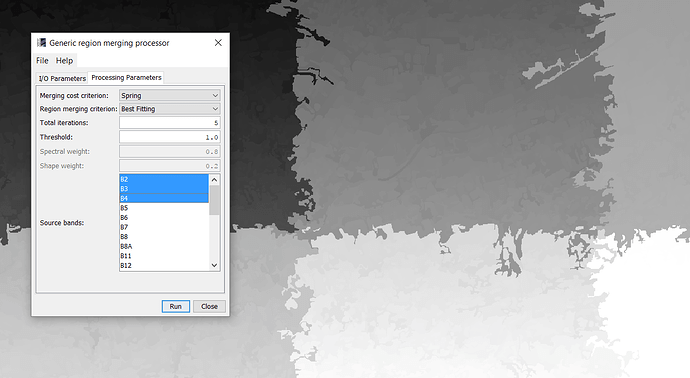Segmentation is now available in Raster > Segmentation
By now it creates raster patches as segments in kind of a tiling mechanism. But each of them has an own value. Unfortunately, no vector is created, which would be very helpful. Has anyone a suggestion on how to proceed with these patches in SNAP, for example for spatial statistics of the objects?
